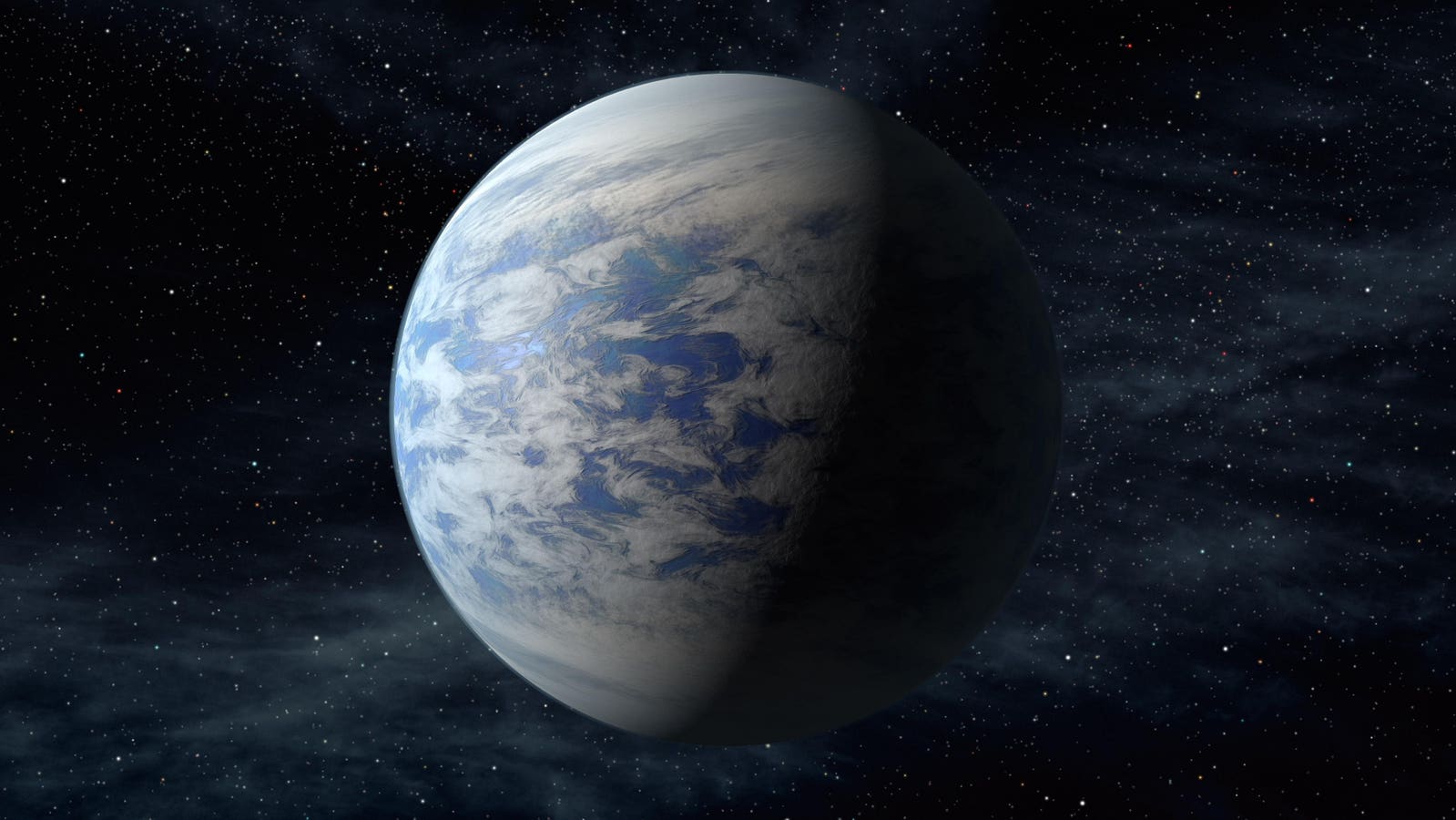Share to Facebook Share to Twitter Share to Linkedin Rocky planets that are about earth-size, or maybe two to three times larger, will offer the best … [+] chances for simple microbial life, says geodynamicist. NASA Ames/JPL-Caltech Despite endless debate on how and why earth has life like our own, we need to remember that it’s been less than three decades since we discovered the first planet circling another sunlike star. Located only 50 light-years away, 51 Pegasi b (now dubbed “Dimidium”) is a so-called hot Jupiter, a planet half the size of our own Jupiter, on a ridiculously short 4.5-day orbit around its parent star. Dimidium’s 1995 discovery shook the planetary science community to its core. But today, the detection of such hot Jupiters has become a rather ho-hum affair. Instead, the current obsession is finding terrestrial mass planets that may harbor microbial or even more advanced life. There are numerous variables in such calculus —- a planet’s given mass; its distance from its parent star; its atmospheric makeup; and whether it has some sort geophysical recycling along the lines of earth’s own plate tectonics. That is, the theory that earth’s outer shell is dominated by the motions of as many as twenty rigid tectonic plates that float and collide over earth’s mantle. Finally, when looking for life, is it better to look for planets with atmospheres that are rich in oxygen like our own? Or is it better to look for planets that have a reducing atmosphere, a hydrogen- or methane- dominated atmosphere that typically has little oxygen? These are some of the questions I posed recently posed to a leading, young astrobiology researcher at the “Unique Species on a Unique Planet?” Conference at the University of Copenhagen in Denmark. MORE FOR YOU $36 Trillion ‘By The End Of 2024’—Elon Musk Backs Serious U.S. Dollar Inflation Warning That’s Predicted To Cause An ‘Inevitable’ Bitcoin Price Crash The World’s Best Single Malt Scotch—According To The 2024 Scotch Whisky Masters Trump Vs. Harris 2024 Polls: Trump Takes 1-Point Lead In First Major Survey In Weeks As Lena Noack, a planetary geodynamicist at the Freie Universität Berlin, told me in Copenhagen, these are still early days when it comes to exoplanetary science. More massive planets may have accreted a lot of gas and, initially, they may have a very dense primordial atmosphere that they just don’t get rid of, says Noack. Thus, one of the sweet spots for looking for life would be a rocky exoplanet some one-to-three-time earth’s mass, she says. Even though, today, earth has a very oxidized atmosphere, life on our planet first evolved in a reducing atmosphere. If I were looking for the best candidate for a habitat where life can start, I would look for a planet which is maybe a little bit more massive than earth, which would have a more reducing atmosphere, says Noack. Simple Life For the origin of life in general, particularly single-cell organisms, a reducing atmosphere is much more attractive, says Noack. Prebiotic materials, like amino acids, can accumulate in larger quantities and are more stable under reducing conditions, she says. Is plate tectonics necessary for the evolution of intelligent life? If we’re going to find intelligent life, most likely, it will be on a planet that has some sort of carbon recycling, most likely some form of plate tectonics, says Noack. I would say you would need to have some mechanism to keep the conditions of the atmosphere more or less stable over very long timescales, she says. Stagnant Lids But Noack says she wouldn’t exclude the existence of life, even intelligent life, on a planet that is a stagnant lid planet, if it’s the right size and has the right distance to its parent star. Planets with stagnant lid tectonics typically have only a single, lithospheric plate which exhibits little horizontal motion. That’s in contrast to planets that exhibit regular horizontal movement of numerous tectonic plates, as here on earth. The main argument for plate tectonics is that you need to keep the atmospheric conditions stable long enough that intelligent life can actually evolve, which may take three billion years, says Noack. I think that there are some planets that could have stable enough conditions for long enough without plate tectonics, she says. But if you don’t have plate tectonics, I don’t think that you could keep habitable conditions for a long timespan, says Noack. Looking for alternative signatures of life I would look for different alternative biosignatures, because oxygen is something that happened on earth because of a very specific type of photosynthesis, says Noack. Even if it’s carbon-based, there’s no need for life to do the same thing it did here, she says. Detecting exo-life requires next generation technology. Simple life emerged on earth within the first billion years of its habitable window, astrophysicist Piero Madau, a University of California, Santa Cruz, noted in a 2023 paper appearing in The Astrophysical Journal. But finding life in the habitable zones of solar type stars will ultimately require statistical analyses of the population of habitable systems, in-depth studies of the climates of individual planets, and searches for chemical biomarkers, Madau writes. All this has motivated the development of the next generation of large ground-based facilities and instrumentation, he notes. Their development will take at least another decade or more. The bottom line? As the astrobiological clock ticks away, many fundamental questions about what is actually conducive for life to evolve have still gone unanswered. Planetary scientists have made progress, but these remain early times in unlocking the secrets of cosmic biogenesis. Follow me on Twitter or LinkedIn. Check out my website or some of my other work here. Bruce Dorminey Following Editorial Standards Print Reprints & Permissions
Subscribe
Login
0 Comments


